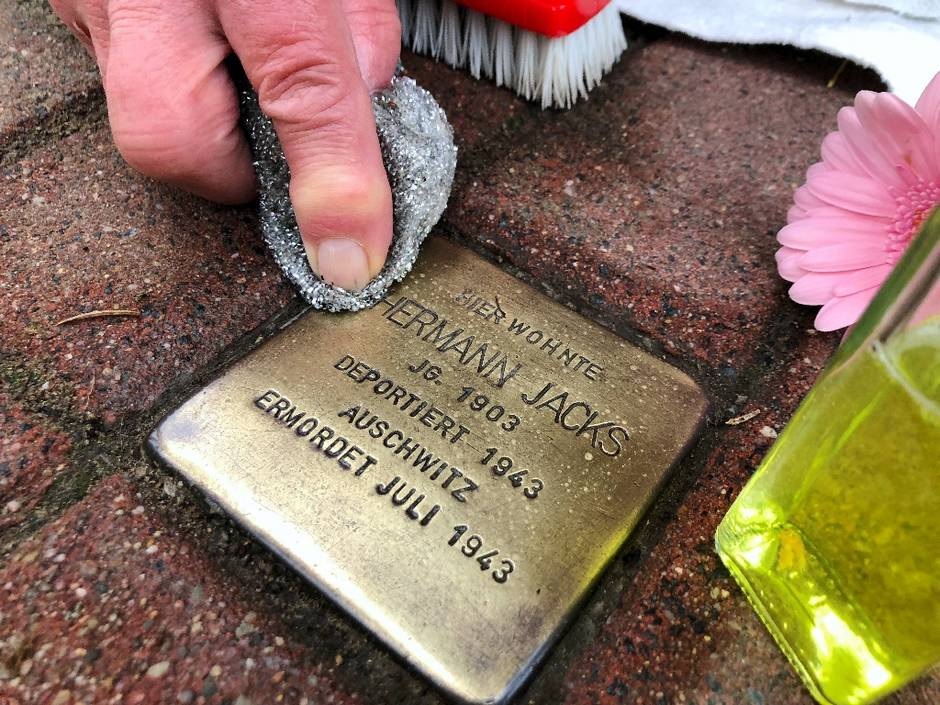Cleaning the Stolpersteine

The upkeep of the Stolpersteine is just as important a part of commemoration as researching the personal data. Here are a few pointers on how to proceed with their maintenance. The stones should be cleaned regularly as the brass plate can tarnish over time due to oxidation and the inscription becomes illegible. However, some Stolpersteine initiatives advise against excessive cleaning as this can damage the oxidation layer. So the inscription might become illegible due to the removal of the material.
For a light cleaning you can use a non-scratching sponge and water. For a more thorough cleaning there are commercial metal polishes available, like the ones from "Sidol" or "Elsterglanz". To avoid white edges on the surrounding pavement, the cleaning agent should be spread on the brass plate in small quantities with either a sponge or a cloth. After about one minute the plate should be polished with a dry cloth. In case of tougher stains you can repeat the procedure. Please do not use any tools with a very abrasive surface such as wire brushes or scouring pads, as they will damage the brass plates. Below are two videos from Brandenburg with cleaning instructions and possible problems. Joint maintenance campaigns by Stolperstein initiatives can help keep alive the culture of commemoration and remembrance. The 9 November, the key date of the November pogroms, and 27 January, the liberation day of the Auschwitz-Birkenau concentration camp and the International Day of Remembrance for the Victims of National Socialism, are suitable for communal commemoration. Apart from cleaning the stones, flowers and candles can also be placed beside them, names and biographies can be read or left at the Stolpersteine, as well.
Cleaning Stolpersteine - trial, error and success (1:27)
How to clean a Stolperstein? (1:25)